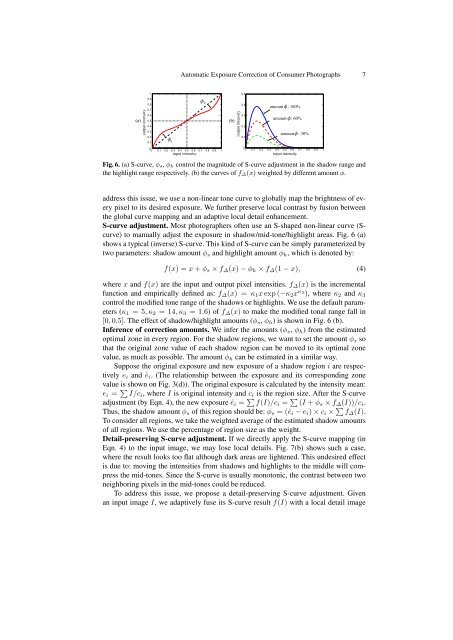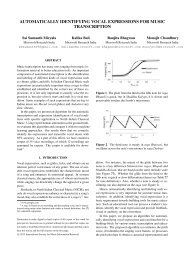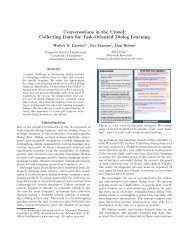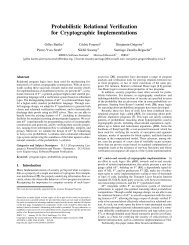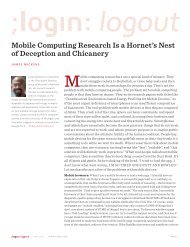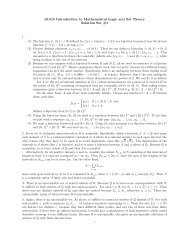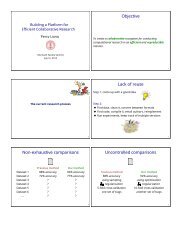Automatic Exposure Correction of Consumer Photographs
Automatic Exposure Correction of Consumer Photographs
Automatic Exposure Correction of Consumer Photographs
Create successful ePaper yourself
Turn your PDF publications into a flip-book with our unique Google optimized e-Paper software.
output intensity<br />
1<br />
0.9<br />
0.8<br />
0.7<br />
0.4<br />
0.3<br />
0.2<br />
0.1<br />
<strong>Automatic</strong> <strong>Exposure</strong> <strong>Correction</strong> <strong>of</strong> <strong>Consumer</strong> <strong>Photographs</strong> 7<br />
(a)<br />
0.6<br />
0.5<br />
(b)<br />
s<br />
0<br />
0 0.1 0.2 0.3 0.4 0.5 0.6 0.7 0.8 0.9 1<br />
input intensity<br />
h<br />
output intensity<br />
0.5<br />
0.4<br />
0.3<br />
0.2<br />
0.1<br />
amount : 100%<br />
amount : 60%<br />
amount : 30%<br />
0<br />
0 0.1 0.2 0.3 0.4 0.5 0.6 0.7 0.8 0.9 1<br />
input intensity<br />
Fig. 6. (a) S-curve, φs, φh control the magnitude <strong>of</strong> S-curve adjustment in the shadow range and<br />
the highlight range respectively. (b) the curves <strong>of</strong> f∆(x) weighted by different amount φ.<br />
address this issue, we use a non-linear tone curve to globally map the brightness <strong>of</strong> every<br />
pixel to its desired exposure. We further preserve local contrast by fusion between<br />
the global curve mapping and an adaptive local detail enhancement.<br />
S-curve adjustment. Most photographers <strong>of</strong>ten use an S-shaped non-linear curve (Scurve)<br />
to manually adjust the exposure in shadow/mid-tone/highlight areas. Fig. 6 (a)<br />
shows a typical (inverse) S-curve. This kind <strong>of</strong> S-curve can be simply parameterized by<br />
two parameters: shadow amount φs and highlight amount φh, which is denoted by:<br />
f(x) = x + φs × f∆(x) − φh × f∆(1 − x), (4)<br />
where x and f(x) are the input and output pixel intensities. f∆(x) is the incremental<br />
function and empirically defined as: f∆(x) = κ1x exp (−κ2x κ3 ), where κ2 and κ3<br />
control the modified tone range <strong>of</strong> the shadows or highlights. We use the default parameters<br />
(κ1 = 5, κ2 = 14, κ3 = 1.6) <strong>of</strong> f∆(x) to make the modified tonal range fall in<br />
[0, 0.5]. The effect <strong>of</strong> shadow/highlight amounts (φs, φh) is shown in Fig. 6 (b).<br />
Inference <strong>of</strong> correction amounts. We infer the amounts (φs, φh) from the estimated<br />
optimal zone in every region. For the shadow regions, we want to set the amount φs so<br />
that the original zone value <strong>of</strong> each shadow region can be moved to its optimal zone<br />
value, as much as possible. The amount φh can be estimated in a similar way.<br />
Suppose the original exposure and new exposure <strong>of</strong> a shadow region i are respectively<br />
ei and êi. (The relationship between the exposure and its corresponding zone<br />
value is shown on Fig. 3(d)). The original exposure is calculated by the intensity mean:<br />
ei = � I/ci, where I is original intensity and ci is the region size. After the S-curve<br />
adjustment (by Eqn. 4), the new exposure êi = � f(I)/ci = � (I + φs × f∆(I))/ci.<br />
Thus, the shadow amount φs <strong>of</strong> this region should be: φs = (êi − ei) × ci × � f∆(I).<br />
To consider all regions, we take the weighted average <strong>of</strong> the estimated shadow amounts<br />
<strong>of</strong> all regions. We use the percentage <strong>of</strong> region size as the weight.<br />
Detail-preserving S-curve adjustment. If we directly apply the S-curve mapping (in<br />
Eqn. 4) to the input image, we may lose local details. Fig. 7(b) shows such a case,<br />
where the result looks too flat although dark areas are lightened. This undesired effect<br />
is due to: moving the intensities from shadows and highlights to the middle will compress<br />
the mid-tones. Since the S-curve is usually monotonic, the contrast between two<br />
neighboring pixels in the mid-tones could be reduced.<br />
To address this issue, we propose a detail-preserving S-curve adjustment. Given<br />
an input image I, we adaptively fuse its S-curve result f(I) with a local detail image


